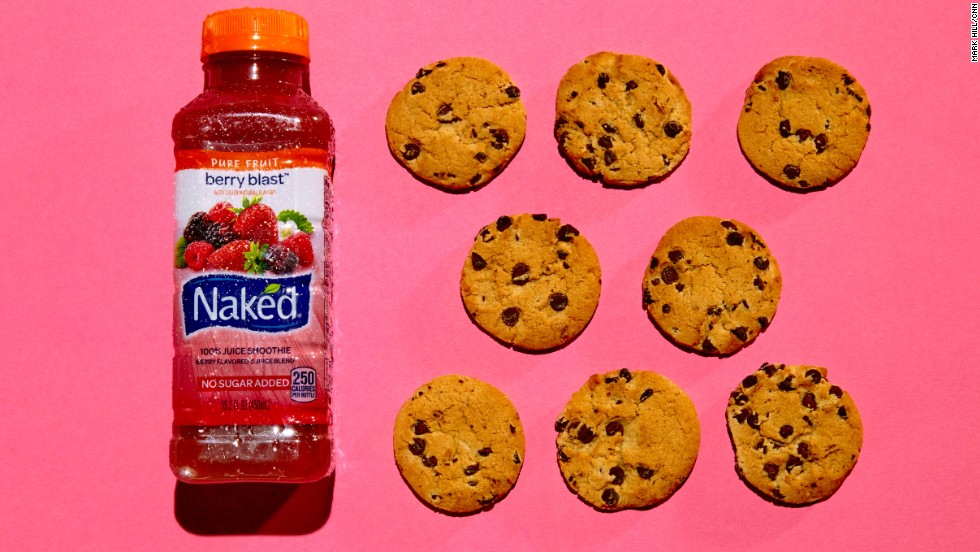Why it’s so hard to kick your sugar habit
(CNN)It seems like we’re always being told to cut down on sugar — but for many of us, that’s easier said than done.
Sugar is hard to avoid, even for people who don’t consider themselves to have a sweet tooth. Even if you ignore the copious amount present where we expect to find it, like in a soda, sugar is hiding in many of our foods — even those that aren’t especially sweet.
According to says Lisa Drayer, nutritionist and author of “The Beauty Diet,” some breads can contain six grams of sugar per slice. Some pasta sauces may contain up to 12 grams of sugar per serving, and some low fat salad dressings, which people might associate with healthy eating, can contain 10 grams of sugar per serving.

This 15.2 bottle of Naked Berry Blast has 29 grams of sugar. Each of these Chips Ahoy cookies contains about 3.6 grahms of sugar.
“I think a lot of people think that just because something is natural, it’s healthy,” says Drayer. “So for example, honey is natural, but it’s very caloric and a lot of people might not know that a teaspoon of honey, or agave for that matter, has more calories than a teaspoon of sugar or sucrose.”
Complicating matters, scientists view some sugars as worse than others.
Natural sugars are found in foods like fruit and milk, in the form of fructose and lactose. The World Health Organization (WHO) says there is no reported evidence of adverse effects from eating these sugars, and fruits and vegetables also contain vitamins, minerals and fiber.
Added sugars, on the other hand, are included during processing or preparation of food and drinks. These provide no nutritional benefits and can contribute to weight gain and obesity. This can lead to serious problems.
“We’ve seen an increase in risk of heart disease, stroke, and diabetes, simply by consuming just one to two sugar-sweetened beverages each day,” says Drayer.
The WHO recommends adults and children reduce their intake of added sugars to less than 10% of their daily energy intake — and says that reducing it to below 5% is even better. Although national sugar intake guidelines vary by country, the American Heart Association’s daily recommendations for consumption of added sugar are a maximum of 24 grams a day for women and 36 grams for men. However, in the USA, the average adult consumes an enormous 88 grams of sugar a day.
Kicking the habit
But it’s not just “hidden” sugar that’s a problem. Another reason why it’s so hard to cut down on sugar is that we simply love to eat it. While it’s not known if sugar is actually addictive, some research shows it fires off the same reward centers in the brain as cocaine.
“It seems to induce cravings and hunger that are comparable in magnitude to addictive drugs,” says Drayer.
A common indicator of addiction is if a person suffers from a loss of control. Drayer explains: “If a person is obsessing about how he or she will get their sugar fix, and they simply can’t focus on anything else, and they have a psychological dependence, then I think you’re probably talking about a food addiction.” Get more information here.
40 total views , 2 views today
